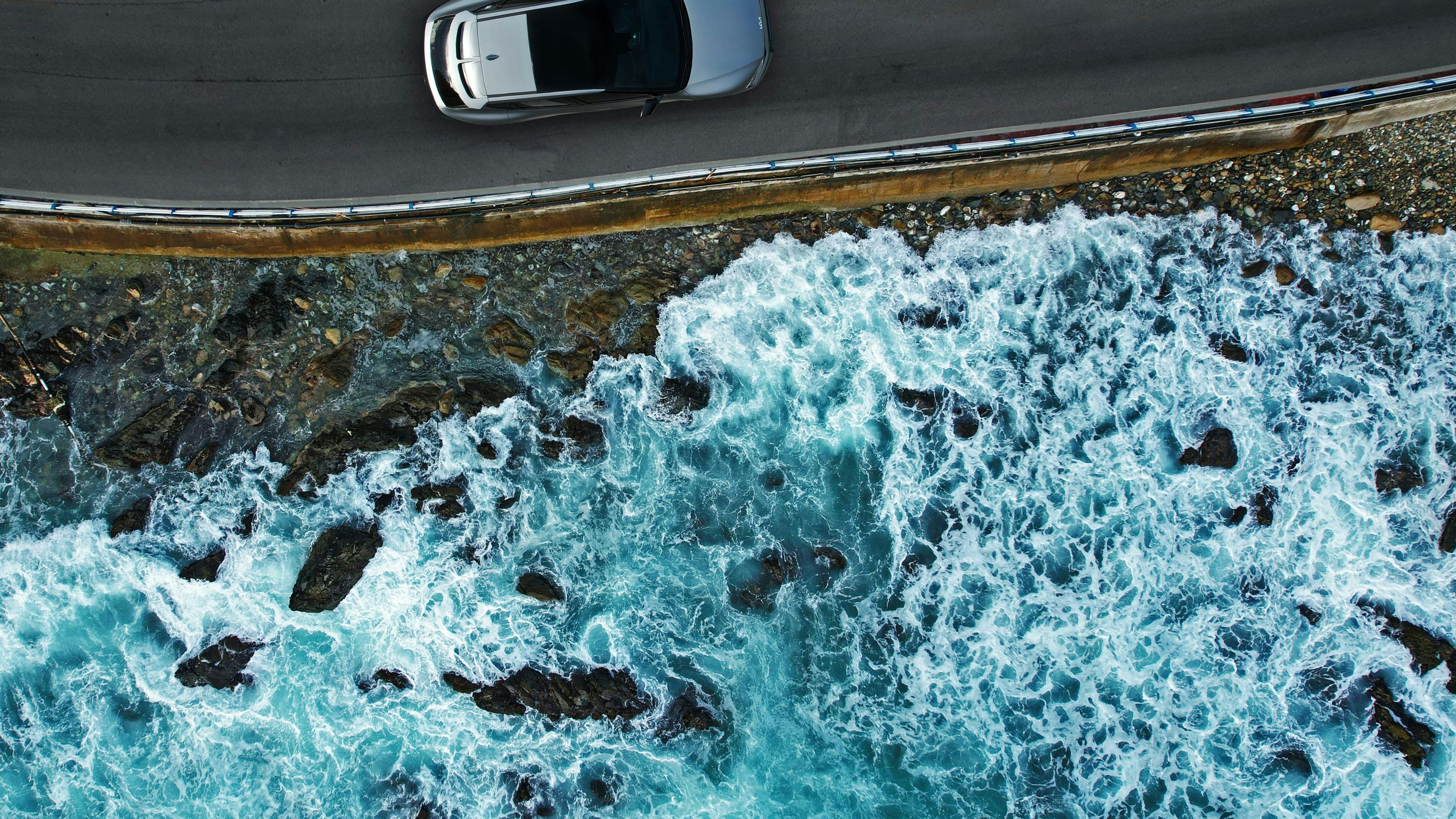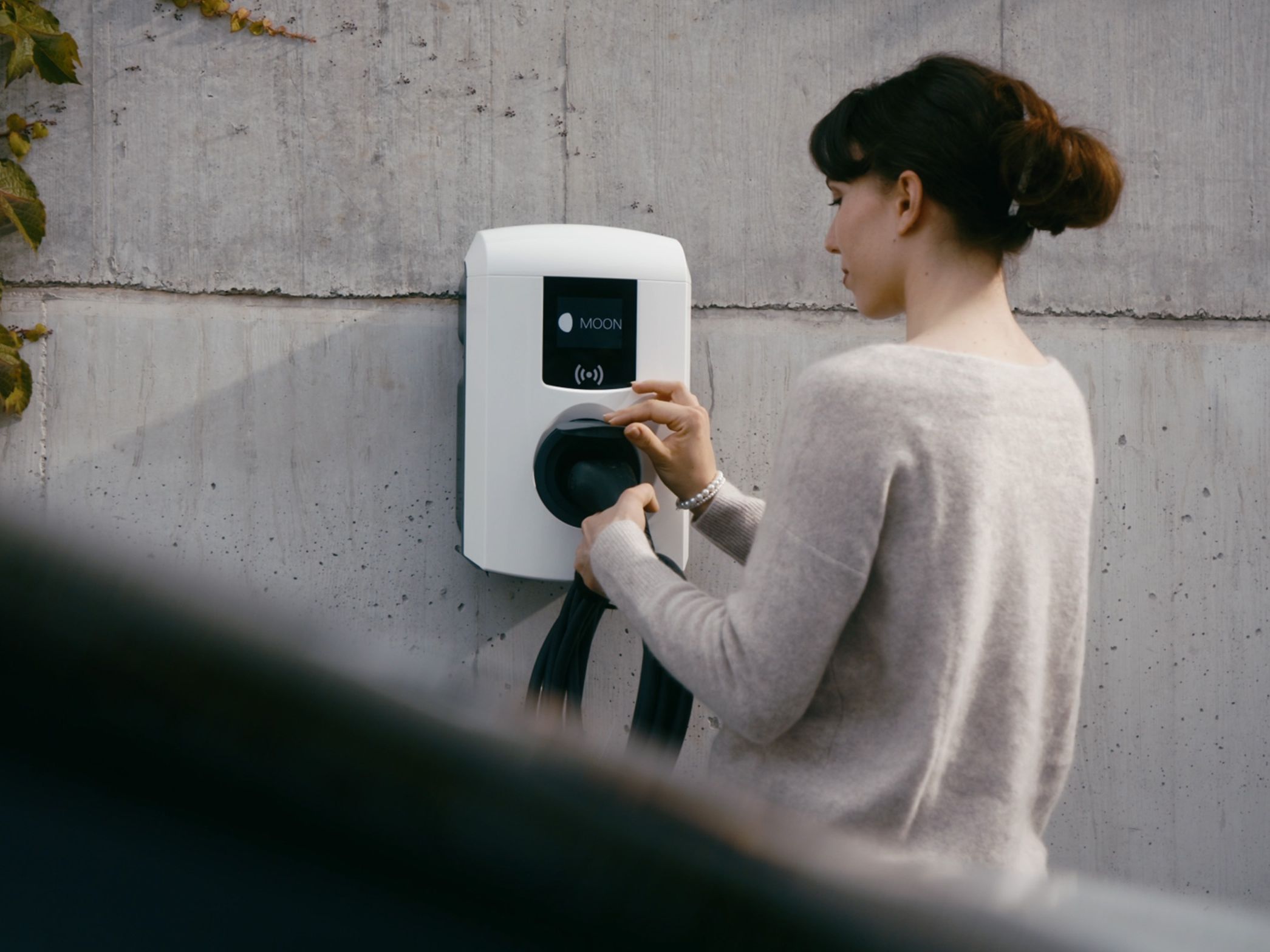
Find out everything about DC charging, what advantages it has and for which applications it is suitable.

Efficient charging of e-cars is becoming increasingly important with the electrification of mobility. Especially in places such as motorway service stations or restaurants, it is particularly important that the charging process takes place quickly. A fast charging station is suitable for such situations. But what exactly does fast charging mean, what do you have to pay attention to during installation and what configuration options are there? This blog article deals with these and other questions and shows the possibilities of fast charging.
What does DC charging mean?
DC charging, also known as fast charging, describes charging with direct current. This method allows the electricity to be fed directly into the battery and stored. If, on the other hand, the electric car is charged with AC electricity, the alternating current must first be converted with an inverter, called an on-board charger, as the battery can basically only store direct current. In contrast to AC charging, where cars are usually charged with 11kWh, DC charging can provide up to 400 kWh of power. The charging process is therefore accelerated by 30 to 40 times. This method means that the battery can be charged quickly even during short stays.
Important factors to consider when choosing the right EV charging solution
In order to be able to decide on a suitable charging solution, the following factors should be considered beforehand:
For the first point, it is necessary to analyze how long the charging times of the cars usually are. How long do the cars usually park? How many cars must be able to be charged at the same time? What about the power consumption of the vehicles? Then it must be checked how high the existing power is compared to the required power. Load management, a transformer or an energy storage system may be necessary. However, the service should not only be available, but also accessible. For this reason, the proximity to the power connections and the parking lot arrangement must be checked in order to be able to decide how the charging infrastructure needs to be installed. An existing internet connection must also be guaranteed. The point of future viability is about making the charging solution flexible and dynamic so that the infrastructure can also be expanded at a later date. Electricity storage options for the sustainable and efficient use of existing electricity are also important here. Regardless of whether the charging infrastructure is private, semi-public or public, it should be determined how the charging process can be controlled and billed. This can be done, for example, through the B-MoRe billing system . In the case of private or semi-public charging stations, consideration should be given to how access can be regulated. In order to keep an eye on the costs during the entire implementation, it is necessary to calculate the one-time and ongoing costs. Costs can be minimized through any subsidy programs and government subsidies and additionally optimized through efficient load management systems.
The right charging solution for a green future
Once the requirements have been defined, it is important to select the appropriate charging solution. Depending on how quickly the vehicles are to be charged and how much power is available at all, there are different versions of DC charging stations that are individually adapted to your needs. MOON offers a range of different fast charging stations that meet different requirements depending on your needs. As a simple, flexible charging solution for public or in-house applications, there is, for example, the MOON POWER Charger HYC 50. With this charging station usually either one car can be charged with 50 kWh or two cars with 25 kWh. For billing and control, there is the integrable B-MoRe billing system. For higher charging capacities, MOON offers the POWER Charger 100-200 DC, whose modular design also enables later retrofitting to a higher charging capacity. In addition, there is also the MOON POWER Charger HYC 200-400, which is perfect for internal or semi-public purposes with its particularly high charging power. This POWER Charger also offers the possibility of achieving higher charging power by retrofitting. But how does such an upgrade work? Each POWER Charger housing contains one or more so-called power stacks. The more power stacks a case contains, the higher the charging power. In order to increase the charging power, another power stack must be integrated into the POWER Charger. This can be done either by MOON POWER's service or by yourself after appropriate training. Thanks to these simple configuration options, MOON offers the right product for every purpose.
Tailor-made charging solutions: How different industries benefit from e-mobility
Depending on the requirements placed on the charging solution, there are different use cases. These include:
Car dealerships: Flexible charging as the key to the future of e-mobility
Flexible charging is particularly important for car dealerships. In order to demonstrate the versatility of e-mobility to customers, a mixture of fast and normal charging infrastructure is suitable here. A load management system is also well suited as an example of how energy can be used particularly efficiently for charging electric cars.
Fleets: Efficient charging – how load management and expandability ensure success
In the case of fleets, on the other hand, the focus is on the efficient use of the available power. For this reason, the focus is on AC charging, fast charging stations should only be used for emergencies and flexibility. Particularly important for the infrastructure of fleets is the expandability and a suitable load management system in order to still have enough charging infrastructure when the fleet is expanded and to be able to make perfect use of the available power.
Tourism & Leisure: Charging infrastructure as a new competitive advantage for sustainable tourism
Versatility is particularly important in tourism and leisure. Depending on whether it is a short break in transit or a longer stay on a shopping trip or an excursion, both fast and normal charging infrastructure should be offered, as more and more guests attach importance to sustainable mobility. Well-developed charging infrastructure can therefore be an important decision-making factor when it comes to choosing a hotel, holiday accommodation or restaurant. Especially in the case of fast-charging parks for such purposes, it must be clarified exactly to what extent the actual power is sufficient for the required power. In addition, the payment process must be simple and transparent to enable an uncomplicated charging process.
Trade & Logistics: Fast charging for more customer frequency and increased sales
In the areas of trade and logistics, the focus is clearly on fast-charging infrastructure due to the short downtimes. The charging infrastructure motivates customers to visit your business more often and for longer, which can significantly increase sales.
DC charging: The future of fast and efficient e-car charging
In summary, it can be said that DC charging is an efficient way to quickly charge an electric car even during a short stay. However, before starting with the expansion of the charging infrastructure, it is important to precisely define the requirements for the charging solution and to consider any limitations in order to find a solution that is precisely tailored to your needs. Thanks to the wide range of charging stations with flexible customization options, MOON offers the right charging solution for every need. In combination with AC charging infrastructure, a wide range of charging options can be offered to make the switch to e-mobility easy and attractive.
We are always at your disposal for further information and inquiries. Get a free and non-binding consultation now.
-(1))

Knowledge & Facts
DC charging station: Focus on fast charging for electric vehicles
Fast charging for electric vehicles is becoming increasingly important – and DC charging stations play a crucial role in this.

Knowledge & Facts
Electromobility put to the test
These misconceptions exist around the topic of electromobility. Find out what's really behind the false assumptions.

Knowledge & Facts
Charging company cars at home: requirements, installation & billing
Find out how you can charge your company car conveniently at home. We give you practical tips for installation and billing.